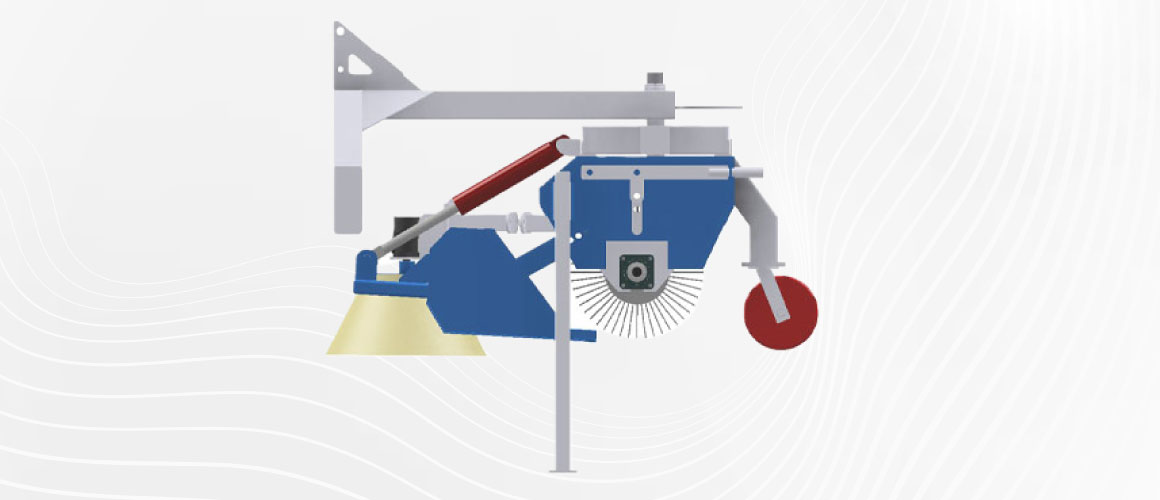How to Choose The Right Road Sweeping Machine?

Road sweeping machines are used in cities, construction sites, factories, and highways to clean roads, remove dust, and keep work areas safe. They help in maintaining cleaner surroundings and better visibility for traffic movement. But choosing the wrong machine can lead to poor cleaning results, frequent breakdowns, and extra maintenance costs.
Many people get confused while selecting the right sweeping machine because there are different types, sizes, and features in the market.
In this blog, we’ll explain how to choose the best road sweeping machine based on your work needs, and what factors to keep in mind while buying.
Why is it important to choose the right road sweeping machine?
Every worksite has different cleaning needs. A machine used for factory yards may not work well on highways. Similarly, a broom that suits dry dust areas may not be good for wet waste or heavy debris. That’s why using the wrong machine leads to low performance, more wear and tear, and higher costs.
Choosing the right road sweeping machine ensures smoother cleaning, better fuel or power usage, and longer life of the machine. It also saves time, labour, and daily maintenance troubles. A machine that fits your job makes your team’s work easier and more efficient.
Key points to consider while choosing your sweeping machine
Before you buy a road sweeping machine, it’s important to match it with your actual site needs. The size, surface type, waste volume, and working hours all play a big role. Here are the main things to look for:
1. Type of surface and waste to be cleaned
Different areas need different cleaning strengths. A narrow lane will need a different broom than a wide highway.
- Choose mechanical sweepers for heavy waste like stones or mud.
- Hydraulic or suction-based models work better for dust, dry leaves, or fine sand.
- Use wide brushes for large open areas, and compact models for small roads or inside premises.
- For wet areas, ensure the broom can handle moisture without getting stuck.
- Avoid lightweight models in industrial zones with sharp waste or metals.
2. Cleaning width and coverage area
The width of the machine decides how fast it can clean a particular area. Bigger is not always better—it depends on your job.
- For highways, go for sweeping width above 2000 mm.
- For municipal roads, mid-size models between 1500–2000 mm work well.
- Smaller areas like factory roads or colonies need machines around 1000–1400 mm.
- Check the turning radius of the machine—tight turns may need a compact design.
- Always balance width with transport ease and fuel use.
3. Type of mounting and movement
You can buy a self-driven sweeping vehicle or an attachment-type broom for your tractor or loader.
- Tractor-mounted brooms are good for villages, municipal roads, and sites with existing farm vehicles.
- Loader or skid-steer-mounted models suit industries and warehouses.
- Self-propelled machines are perfect for city roads and urban municipal work.
- Always check whether your existing vehicle supports the attachment or not.
4. Power source and fuel options
Some brooms run on tractors, some on diesel engines, and some electric ones are also available.
- Go for diesel-powered units for remote or highway jobs where electric charging is hard.
- For short shifts and indoor use, electric options can save fuel and reduce pollution.
- Tractor-powered models use vehicle power and save on engine cost.
- Check fuel use per hour—low consumption means better savings in the long run.
5. Dust control and water spraying features
Dust flying during sweeping is a big issue, especially in urban areas or dry seasons.
- Choose a model with built-in water sprinklers to settle dust while sweeping.
- Spraying helps avoid visibility problems for nearby vehicles.
- Good dust control also protects the motor and brush from fine dust particles.
- Use adjustable spray nozzles for better control on different surfaces.
6. Ease of maintenance and spare part access
Even strong machines need care. The easier it is to maintain, the less downtime you’ll face.
- Look for models with open-access design to reach brush, pipes, and oil tank.
- Ask the supplier about availability of spare parts like bristles, pipes, and filters.
- Choose a brand with service support in your area.
- Check if common parts are easily available and not too costly.
- Avoid imported machines with hard-to-find spares.
Why Aaspa Equipment is the right choice for fully automatic road sweeping machines?
Selecting the right supplier for a fully automatic road sweeping machine matters just as much as choosing the machine itself. A good supplier ensures you get the right model, easy maintenance, and long-term support—all of which make your investment worth it.
Here’s why Aaspa Equipment stands out:
- Fully automatic models designed for continuous cleaning without manual work
- Heavy-duty build to handle Indian roads, construction debris, and dust
- Smart features like water spray system, easy-to-use control panel, and efficient waste collection
- Quick access to spare parts, even in remote regions
- On-site support, operator training, and service assistance available
- Customized models available based on working width, mounting type, or job site requirement
Conclusion
A road sweeping machine is not a small investment. To make the most out of it, you need to match the machine with your actual work needs—area type, waste volume, fuel source, and vehicle compatibility. The right machine will save you time, reduce cleaning stress, and last much longer.
And when you buy from a reliable supplier like Aaspa Equipment, maintenance becomes even easier, with less downtime and better output. To explore road sweeping machines that suit your job, contact us at info@aaspaequipment.com
